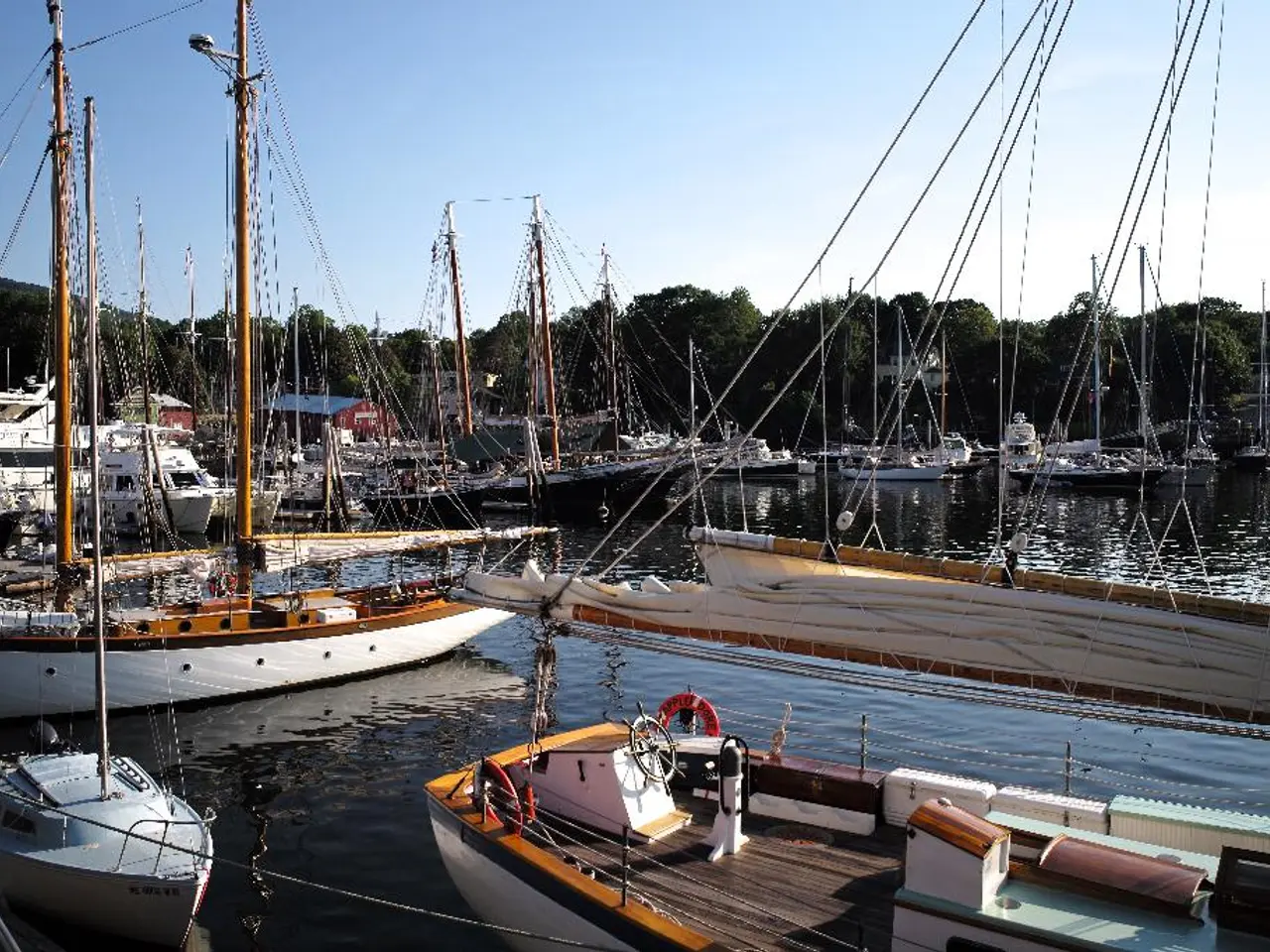Hapag-Lloyd faces a 3% cut in half-year net profit, adjusts full-year expectation downward
Hapag-Lloyd Faces Challenges Amid Geopolitical Instability and Trade Volatility
Hapag-Lloyd, the world's fifth-largest shipping firm, has reported a 3.1% decline in first-half net income, with the lower end of the revised full-year earnings forecast now standing at €200m. The decline in earnings is not directly attributed to geopolitical issues, US trade policy, or the tense security situation in the Red Sea, but these factors are contributing to operational challenges and margin pressures.
The company's earnings outlook remains uncertain due to ongoing geopolitical risks and fluctuating freight rates. EBITDA is forecast between $2.8 billion and $3.8 billion for 2025, revised down from earlier projections.
The decline in Hapag-Lloyd's EBIT is largely due to uncertainty over geopolitical issues and US trade policy. Key factors include frequent changes in US trade policies, which have caused volatility in demand and freight rates, complicating revenue and earnings predictability.
Another challenge is geopolitical tensions, notably the security risks in the Red Sea, which have forced vessel diversions around the Cape of Good Hope, increasing operational costs and contributing to delays and disruptions. Port congestion at major seaports has added to operational inefficiencies and increased costs, further pressuring margins.
These geopolitical and trade-related disruptions have contributed to a decline in EBITDA and EBIT, despite an 11% growth in transport volumes and a steady average freight rate (~$1400/TEU).
CEO Rolf Habben Jansen reported a "solid note overall" regarding the company's performance. He emphasized the need for cost optimisation within the Gemini partnership and announced a €1 billion cost-cutting plan, terminal expansions, and strategic investments in fleet modernization to enhance resilience and stabilize margins amid this volatile environment.
The operational collaboration between Hapag-Lloyd and Maersk (Gemini) has started successfully. Gemini brings together a network of 340 ships on seven trade corridors.
Despite the challenges, Hapag-Lloyd's performance in the first half of the year was marked by growth. Revenues for the first half increased by 10% to €9.7 billion, and transport volumes grew by 10.6% to 6.7 million 20-foot-equivalent (TEU) containers.
However, the tense security situation in the Red Sea has been a burden for Hapag-Lloyd, with Houthi militant attacks on Middle Eastern shipping forcing vessel owners to sail a costly alternative route around Africa. These issues have impacted the global shipping industry, adding to the operational challenges faced by Hapag-Lloyd.
In summary, US tariff policy volatility, security concerns in critical shipping lanes like the Red Sea, and port congestion are the main geopolitical and trade policy issues negatively impacting Hapag-Lloyd’s 2025 earnings, leading to higher operating costs and margin pressures despite volume growth. The company is responding with cost-cutting measures, strategic investments, and collaborations to navigate this challenging environment.
Read also:
- Stone mining has transformed the once renowned 'Sada Pathor' into a desolate, post-apocalyptic landscape.
- In the Heart of Soho, Manhattan, a New Brewery Emerges Underground
- Financial regulatory body OCC imposes Anti-Money Laundering (AML) disciplinary action against Wells Fargo.
- Revised Tax Policy for Motor Vehicles Pushed for Greater Eco-friendliness, Suggested by Court Auditors







